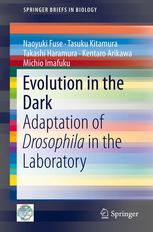

Most ebook files are in PDF format, so you can easily read them using various software such as Foxit Reader or directly on the Google Chrome browser.
Some ebook files are released by publishers in other formats such as .awz, .mobi, .epub, .fb2, etc. You may need to install specific software to read these formats on mobile/PC, such as Calibre.
Please read the tutorial at this link: https://ebookbell.com/faq
We offer FREE conversion to the popular formats you request; however, this may take some time. Therefore, right after payment, please email us, and we will try to provide the service as quickly as possible.
For some exceptional file formats or broken links (if any), please refrain from opening any disputes. Instead, email us first, and we will try to assist within a maximum of 6 hours.
EbookBell Team

5.0
70 reviewsHow organisms come to possess adaptive traits is a fundamental question for evolutionary biology. Although it is almost impossible to demonstrate evolution in the laboratory, this issue can be approached by using an unusual organism, “Dark-fly”: Drosophila melanogaster kept in complete darkness for 57 years through 1,400 generations, which corresponds to 28,000 years in terms of human generations. Has Dark-fly adapted to an environment of total darkness? If so, what is the molecular nature of the adaptation? In Evolution in the Dark, the remarkable findings from the Dark-fly project performed at Kyoto University are presented. It was found that Dark-fly did not have poor eyesight, but rather exhibited higher phototaxis ability and displayed lengthened bristles on the head that function as tactile receptors. Circadian rhythms were weakened but still retained in Dark-fly. With recent progress in genome science enabling researchers to perform whole genome sequencing for Dark-fly, a large number of mutations were identified including genes encoding a light receptor, olfactory receptors, and enzymes involved in neural development. The Dark-fly project is a simple but very long-term experiment. Combined with advanced techniques in genetics and genomics, it is a valuable tool for understanding the molecular nature of adaptive evolution.